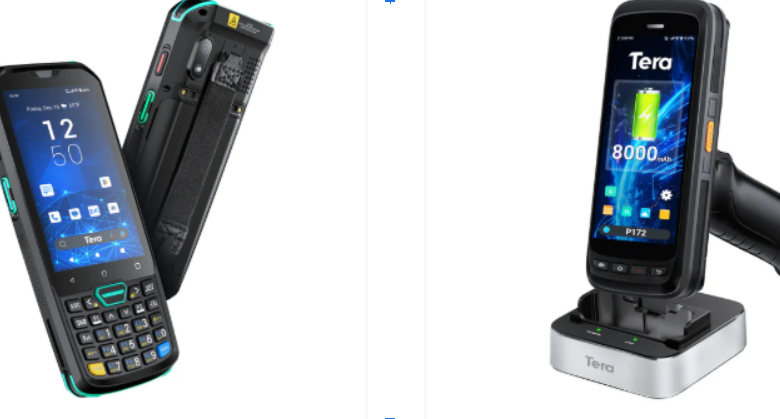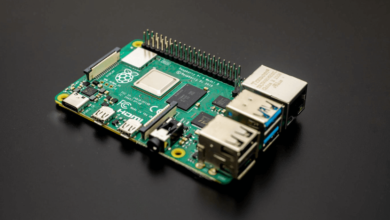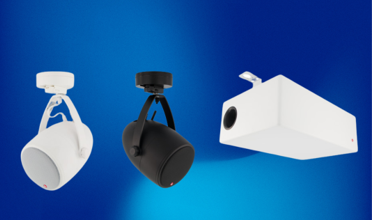The Future of Android Barcode Scanners in Inventory Management

Introduction
Barcoding technology has revolutionized supply chain management, evolving from simple linear codes to sophisticated systems. In today’s digital marketplace, the future of barcoding extends beyond traditional inventory tracking. It offers transformative possibilities for businesses of all sizes.
Digital transformation in barcoding is shifting the inventory management landscape. Modern systems integrate cloud-based solutions with scanning technology, enabling real-time data capture and analysis. This evolution benefits small and medium-sized businesses, particularly in e-commerce and retail, where efficiency and accuracy directly impact profitability.
A robust barcode inventory system provides the foundation for this advancement, automating tasks and providing instant visibility into stock levels, movement patterns, and business analytics. Integrating these systems with emerging technologies creates powerful tools that streamline operations and reduce human error.
The retail and e-commerce landscape evolves with developments in barcode technology. Artificial intelligence now enhances the accuracy of next-generation barcode scanners. Augmented reality applications overlay digital information onto physical products, while 2D codes pack more data into smaller spaces. Smart labels with embedded sensors and automated systems are revolutionizing how businesses track and manage inventory.
These advancements offer practical solutions for businesses striving to stay competitive. As technology continues to advance, exploring these tools will reveal how they can transform operations and position businesses for future growth.
The Evolution of Barcoding
Barcode technology has transformed from simple linear patterns to sophisticated data carriers, mirroring the growing demands of modern commerce and the need for more efficient inventory tracking systems.
From Simple Lines to Complex Codes
Original one-dimensional barcodes revolutionized retail operations with their straightforward approach to product identification. These black and white stripes formed the foundation for automated checkout systems and basic inventory tracking. The universal adoption of 1D barcodes demonstrated the value of quick, accurate product identification.
See also: Modern Innovations in Floor Cleaning Technology
The Rise of 2D Barcodes
Modern two-dimensional barcodes, including QR codes and Data Matrix symbols, represent a significant leap in capabilities. These formats pack more information into a smaller space and offer robust error correction features. A single 2D barcode can contain product specifications, manufacture date, batch numbers, and even marketing information – a significant advancement over their linear predecessors.
Industry Standards and Applications
Different sectors have adopted specific barcode formats to meet their unique requirements. Healthcare organizations often prefer Data Matrix codes for their reliability in tracking medical supplies, while retailers might choose QR codes for their consumer engagement potential. These choices are guided by standardized guidelines that ensure consistency and interoperability across supply chains.
Selecting the right barcode technology can significantly impact operational efficiency and data management capabilities. The rapid advancement in barcode technology continues to drive improvements in inventory accuracy, speed of operations, and customer service quality. These developments have made sophisticated inventory tracking accessible to businesses of all sizes, setting the stage for even more innovative solutions in the future.
Next-Gen Barcode Scanners and Augmented Reality
Modern barcode scanning technology has evolved beyond simple handheld devices, revolutionizing how businesses manage inventory and fulfill orders.
Advanced Scanner Features
Next-gen barcode scanners represent a leap forward in functionality and reliability. These devices now incorporate advanced imaging sensors that can read barcodes from any angle, even when codes are damaged or poorly printed. Built-in Bluetooth and Wi-Fi connectivity enables data transmission to inventory management systems, while ruggedized designs withstand drops, dust, and demanding warehouse environments.
Real-Time Supply Chain Impact
Integrating smart scanning devices delivers improvements across operations:
- Instant data capture and validation reduces picking errors by up to 99%.
- Live inventory updates prevent stockouts and overstock situations.
- Automated data entry eliminates manual keying mistakes.
- Mobile connectivity enables real-time order status updates.
The Augmented Reality Revolution
Augmented reality barcoding represents the cutting edge of warehouse technology. AR-enabled devices project digital information directly into the worker’s field of view, creating an intuitive picking experience. Through AR headsets, staff can see:
- Virtual arrows pointing to item locations.
- Digital pick confirmations.
- Real-time inventory counts.
- Step-by-step training instructions.
These technological advances are making sophisticated inventory management accessible to companies of all sizes, enabling them to compete effectively in today’s market.
Smart Labels: The Next Frontier
Smart labels represent a revolutionary leap forward in inventory tracking, combining traditional barcode functionality with embedded sensors and chips for unprecedented monitoring capabilities. These intelligent tags are transforming product tracking, authentication, and management throughout the supply chain.
Core Components and Capabilities
- Smart labels incorporate miniature electronic components like RFID chips, temperature sensors, or humidity monitors directly into the label material.
- Each label functions as a data collection point, continuously gathering and transmitting information about product conditions.
- Advanced versions can include tamper-evident indicators or time-temperature monitoring strips.
- Integration with mobile apps and warehouse management systems enables real-time visibility.
The real power of smart labels emerges when combining traditional barcodes with these enhanced tracking capabilities. For example, a pharmaceutical shipment can now automatically record temperature fluctuations during transit, ensuring proper storage conditions are maintained. This type of monitoring was previously impossible with conventional barcoding systems.
Smart labels provide unprecedented visibility for manufacturers seeking robust production tracking solutions. These labels can enhance barcode systems for manufacturing by monitoring production conditions, verifying authentic components, and maintaining detailed product histories.
Smart labels are valuable for brand protection and authentication. By embedding unique digital signatures within each label, businesses can quickly verify genuine products and combat counterfeiting. This capability is crucial for industries like pharmaceuticals, luxury goods, and high-value electronics where authenticity verification is paramount.
Real-time condition monitoring, enabled by smart labels, helps prevent inventory losses due to environmental factors. Automated alerts notify warehouse managers before damage occurs when products exceed acceptable temperature or humidity thresholds. This proactive approach to inventory management represents a significant advancement over traditional barcode-only systems.
Automation in Barcoding
The evolution of barcode automation has revolutionized how warehouses and fulfillment centers handle inventory management. Facilities have moved beyond handheld scanners, embracing systems that minimize human intervention and maximize efficiency.
Advanced Scanning Solutions
Automated scanning technology now integrates with warehouse infrastructure, creating a continuous flow of real-time data. Fixed-mount scanners positioned along conveyor systems capture product information as items move through the facility. Robotic arms equipped with scanning capabilities can identify and sort packages while updating inventory records, reducing processing times and eliminating manual data entry errors.
The Power of Integration
The strength of modern barcode systems lies in their ability to work alongside other technologies. While RFID offers advantages for certain applications, barcodes remain the foundation of most tracking systems. Sensor fusion combines traditional barcoding with IoT devices to create a view of inventory movement and status. For example, smart sensors can detect when items pass through specific zones while barcode scans confirm product identification.
Centralized Data Management
Success in multi-channel operations depends on maintaining accurate, real-time inventory data across all sales channels. Barcode inventory management systems serve as the central hub, coordinating information from various scanning points throughout the facility. This centralization enables businesses to:
- Track inventory levels across multiple locations.
- Coordinate picking and packing operations.
- Monitor order fulfillment progress.
- Generate accurate shipping documentation.
- Maintain real-time stock availability for online sales.
Automating barcode systems represents a step forward in inventory control, offering businesses the ability to manage their operations precisely and efficiently.
Digital Transformation in Barcoding
The evolution of barcoding parallels the digital revolution in business operations. Digital transformation in barcoding represents a shift from isolated scanning devices to interconnected systems that form the backbone of intelligent inventory management.
Cloud Integration and Real-time Operations
The transition to cloud-based platforms marks a pivotal advancement in barcode technology. A robust barcode inventory system now provides instant visibility across multiple locations, enabling businesses to track inventory movements and make data-driven decisions in real-time. This connectivity eliminates information silos and reduces the lag between scanning items and updating inventory records.
Platform Flexibility and Future-proofing
Businesses recognize the importance of selecting platforms that accommodate technological evolution. Modern barcode systems should support both traditional 1D barcodes and newer 2D variants like QR codes. Exploring barcode inventory system alternatives can reveal specialized solutions that better align with specific industry needs or operational workflows.
Impact on Business Operations
Digital transformation in barcoding delivers benefits across multiple areas:
- Enhanced Warehouse Visibility: Real-time tracking allows managers to optimize storage layouts and picking routes.
- Improved Supply Chain Collaboration: Connected systems enable data sharing with suppliers and partners.
- Reduced Operational Costs: Automation of manual processes and prevention of inventory discrepancies.
- Better Decision Making: Access to historical data and predictive analytics supports strategic planning.
- Scalability: Cloud-based solutions grow alongside business needs without requiring significant infrastructure changes.
This digital evolution transforms barcode scanning from a data collection tool into a strategic asset that drives operational excellence and competitive advantage. Integrating these systems with other business technologies creates a foundation for continuous improvement and innovation in inventory management practices.
Industry Applications and Future Outlook
Barcoding technology continues to evolve, transforming operations across multiple sectors. Understanding these changes helps organizations prepare for future innovations while maximizing current capabilities.
Impact Across Business Sectors
E-commerce operations benefit from advanced barcoding with improved order accuracy and faster fulfillment speeds. Real-time inventory tracking enables accurate stock levels across sales channels, reducing oversells and customer disappointment. Manufacturing facilities are seeing enhanced production tracking and quality control, with every component traceable through the assembly process.
The retail sector stands at the forefront of barcode innovation with smart labels that go beyond product identification. These tags enable dynamic pricing, expiration date tracking, and temperature monitoring for sensitive goods. Augmented reality barcoding allows customers to scan products with their phones to access detailed product information, reviews, and usage instructions.
Implementation Strategies
Introducing new scanning hardware requires planning and execution. Successful implementations follow a phased approach:
- Start with pilot programs in contained areas.
- Train staff thoroughly before full deployment.
- Run old and new systems in parallel initially.
- Monitor and adjust based on feedback.
A barcode inventory system provides the foundation for these capabilities while maintaining operational efficiency. Companies experiencing rapid growth benefit from such systems, as they scale smoothly with increased transaction volumes and adapt to changing needs.
The future of barcoding promises greater integration with artificial intelligence and IoT devices. These advancements will enable predictive inventory management and automated reordering, further streamlining operations while reducing costs and improving accuracy.
Maintaining Standardization and Compliance
In today’s interconnected supply chains, consistent barcode standards are crucial for seamless operations. Adherence to global standards like GS1 provides a language that enables products to move efficiently across borders and between trading partners.
Essential Compliance Strategies
- Standard Implementation: Following GS1 guidelines ensures barcodes are readable worldwide and contain standardized product information. Regular audits of barcode quality and data structure help maintain compliance with evolving requirements.
- Label Consistency: Creating standardized labeling protocols across product lines eliminates confusion and reduces errors. A barcode system for manufacturing automates label generation and validates formats before printing, preventing non-compliant labels from entering the supply chain.
- Distribution Channel Management: Different retail partners may have specific labeling requirements. Implementing a flexible barcode inventory system allows quick adaptation to compliance needs while maintaining core standardization.
- Future-Proof Implementation: Building systems on recognized standards creates a foundation for adopting emerging technologies. Standardized systems require minimal adjustments rather than complete overhauls when new requirements arise.
Compliance creates sustainable processes that adapt to change. Well-implemented standards reduce operational friction and create opportunities for growth. While initial standardization requires careful planning, the long-term benefits of smoother operations and easier technology adoption make it worthwhile.
The Impact of Android Barcode Scanners in Specific Industries
Android barcode scanners offer a flexible and cost-effective alternative to traditional scanning methods across various industries. Here’s how they’re impacting several key sectors:
- Retail: Android barcode scanners streamline operations from inventory management to point-of-sale. Their portability and app integration make them versatile tools for managing stock levels, conducting price checks, and facilitating faster checkouts.
- Healthcare: In healthcare settings, accuracy and efficiency are crucial. Android barcode scanners enable healthcare professionals to quickly and accurately track patient records, medications, and lab samples, reducing errors and improving patient safety.
- Logistics and Warehousing: Android barcode scanners optimize logistics operations by providing real-time tracking of shipments, efficient warehouse management, and improved accuracy in order fulfillment. Their rugged design and wireless connectivity make them ideal for use in demanding environments.
- Manufacturing: Manufacturers use Android barcode scanners to track raw materials, manage production processes, and ensure quality control. The ability to integrate with existing systems and customize apps makes them valuable tools for streamlining operations and reducing downtime.
Why Businesses Need Android Barcode Scanners
Integrating android barcode scanners can have a significant impact on efficiency and reduce costs. Small and medium retail businesses can benefit from increased operational accuracy. Also, Android barcode scanners can greatly improve productivity, minimize errors in inventory management, streamline POS, enhance inventory control, optimize logistics services, and offer overall enhanced versatility.
Conclusion
The landscape of barcoding technology continues to evolve rapidly, bringing transformative possibilities to businesses. Next-gen barcode scanners equipped with augmented reality capabilities are revolutionizing warehouse operations, while smart labels create unprecedented levels of product traceability and customer engagement. Automating barcode systems reduces manual errors and increases operational efficiency across supply chains.
Staying competitive requires embracing these technological advances. By implementing a robust barcode inventory system today, companies establish the foundation needed to leverage future innovations seamlessly. This approach optimizes current operations and positions organizations to adopt emerging capabilities as they become available.





